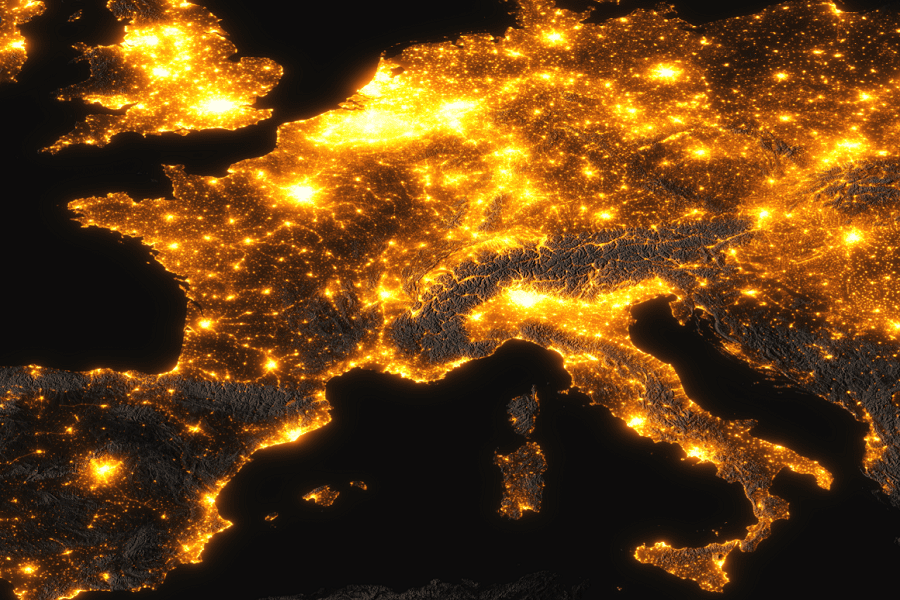You’re all set up with your telescope, the lighting is perfect, and you’ve been using software to help you track the stars and planets for this very moment.
You’re excited to take awesome shots of the moon and Saturn’s rings, but then the pictures come out crummy because of light pollution. It’s so disappointing.
What, exactly, is light pollution?
Light pollution is basically when there’s too much light in your surroundings, such as the lights of the city. It can cause your images to lack contrast and depth, and it washes out starlight.
So, how do you combat it? Do you need to travel to a really dark, remote spot hours away from your home in order to avoid light pollution?
Here’s everything you need to know.
Contents
What’s Causing All That Light Pollution?
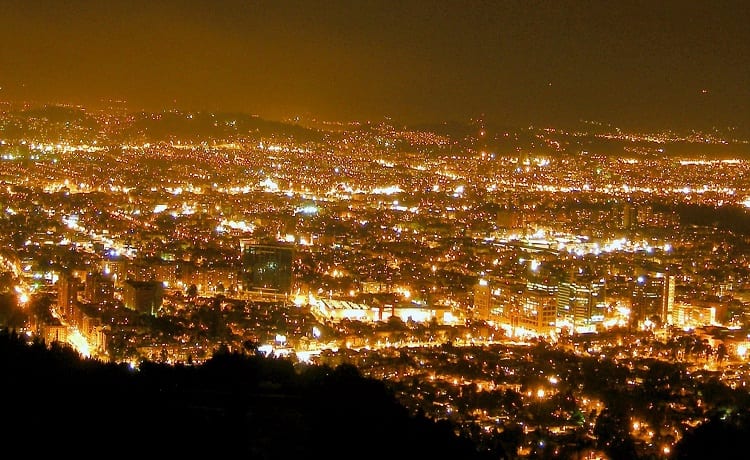
It’s not just streetlights that can cause light pollution which prevents you from getting the pics you want. We are surrounded by artificial light in the towns and cities in which we live, whether that includes household lighting, outdoor lighting, and more.
Despite the light pollution that could be affecting what you can see in the night sky, it’s good to know that some planets are bright enough to be seen even in polluted cities.
These include Venus, Jupiter, and Saturn. But you might not be able to see as many stars or constellations that you want to because light pollution is getting in the way of your astronomy hobby.
To deal with light pollution and ensure that you get the right contrast you want, you should make use of light pollution filters.
Physical Vs. Digital Light Pollution Filters
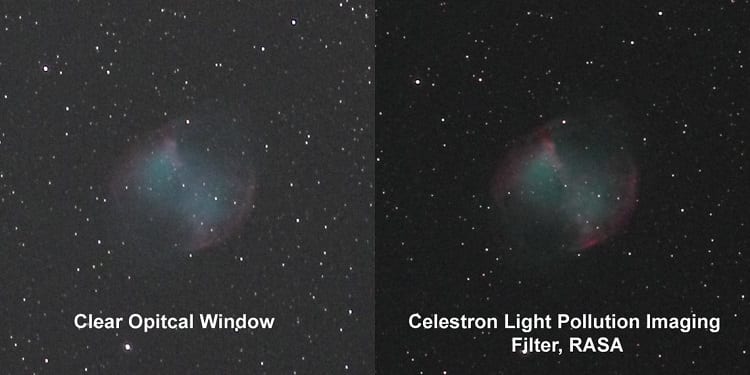
There are two main types of light pollution filters: physical and digital filters.
Physical filters are attached to the camera lens and will make a difference in the type of picture you take. A popular type of physical filter is a physical polarizer. This is good because it reduces reflections.
It does this by limiting the direction of light that strikes your lens so that you can see details in the clouds or celestial objects without the inclusion of haze that can be produced from moisture in the air.
One of the best things about polarizers is that you can also rotate them so that you can choose an angle and reduction level that feels most comfortable to you.
Digital filters, on the other hand, are added to the image during the post-production phase, such as when you adjust the photo in Photoshop. Removing light pollution from your images after they’ve been taken can be achieved in this way.
Don’t Forget To Darken The Sky!
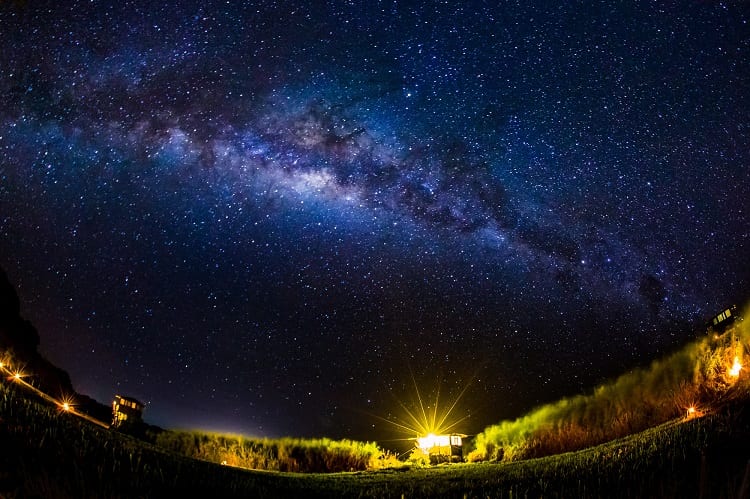
You can also make the sky darker by using software such as Photoshop after you have taken your pictures. You might not think you need to do this, but here’s an interesting thing to remember: the night sky isn’t black. It’s actually a reddish-brown color!
If you want to take pictures of deep-sky astrophotography, such as constellations, you’ll need to use your camera’s exposure for long enough to get details from the noise that’s produced by the camera.
This, however, means that the sky won’t be black, as Sky And Telescope report, and if you tweak the images later so that the sky is black, this will remove the details from them.
Here’s how to darken the sky in Photoshop:
- Choose the eyedropper tool from the tool palette. Change the sample size to 31 by 31 average.
- Go to Levels by accessing Images and Adjustments.
- Then, double-click on the black-point eyedropper.
- In the Color Picker window, you should set the R,G,B values to 35.
- Then you want to click on any area of sky where there are no stars.
These tips, courtesy of Sky And Telescope, will help to eliminate that reddish-brown color of the sky and replace it with a dark gray background.
What Are Light Pollution Maps?
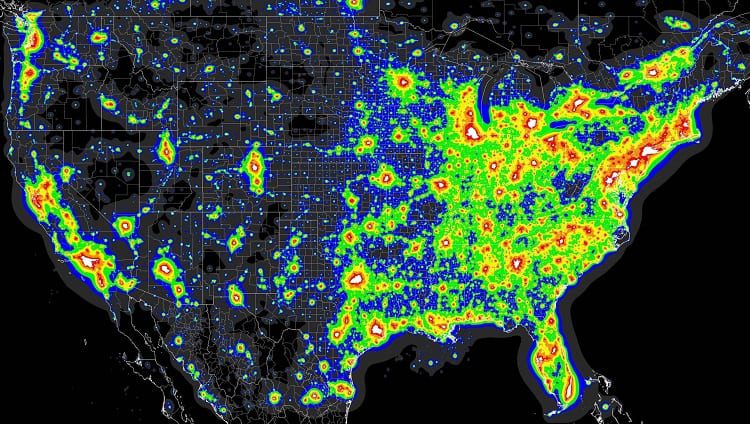
Before you can tackle light pollution so that it doesn’t affect your photography, you need to know how much light pollution is present in your location.
You can access a light pollution map on your smartphone. An example is Light Pollution Map by Dunbar Technology, LLC.
It helps you find dark sites that aren’t as affected by light pollution so that you’ll be able to stargaze in the best place. Another useful app is Dark Sky Meter that measures the brightness in the sky.
There’s also a website you can check out: Light Pollution Map. You can search for your location, down to the road you live in, and the map will zoom into it.
It’s a little difficult to understand, though, so if you’re a beginner you might want to check out Clear Dark Sky instead. It makes use of the Bortle Scale that has nine levels to measure the brightness of the night sky.
It will show you the darkest areas, which are level 1 on the scale, all the way up to level 9, which is bright city skies.
How Do Light Pollution Filters Work?
Filters against light pollution can make everything look so much better. They decrease the brightness of the sky and sky objects more than other objects, which makes it easier to spot celestial objects with increased contrast.
Once you know what light pollution you’re dealing with, you can tackle it with the right filters. These are meant to block wavelengths of light that are released by sodium vapor lamps, which are used to light up the street.
Pollution filters work in that they suppress the yellow wavelengths that are produced by these streetlamps while allowing other wavelengths through.
Types Of Light Pollution Filters
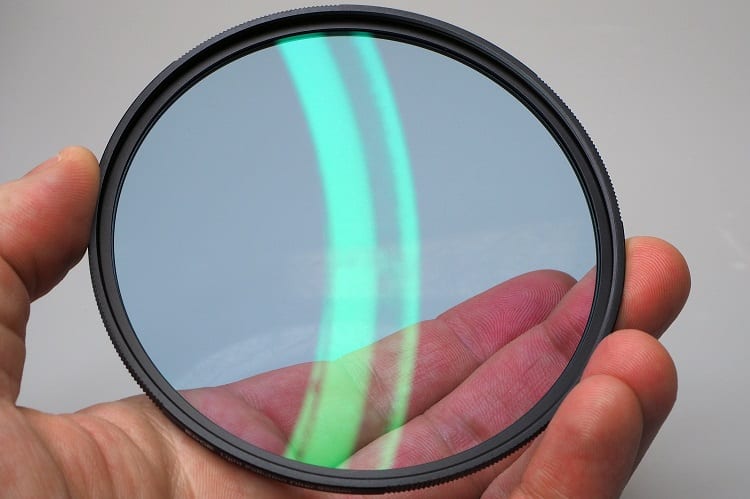
If you’re interested in purchasing a light pollution filter, you might wonder what type of filter you should use. Here’s a rundown of common light pollution filters to know about.
Broadband Filters
These types of filters have a wide bandwidth that allows you to use a variety of wavelengths while also preventing light from sodium as well as mercury street lamps.
One of the benefits of these filters is that they enable light from nebulae and stars to make their way through. This makes broadband filters useful if you’re photographing constellations on a dark night.
The downside of these filters, however, is that whatever wavelengths are allowed through this filter will also bring light pollution with them.
Narrowband Filters
These light pollution filters are meant for areas where there’s a lot of pollution present. They contain smaller bandwidth so they’ll let in fewer types of wavelengths and therefore also deny access to more light pollution.
While that sounds great, it’s worth bearing in mind that these types of filters aren’t that useful when you want to photograph stars because they make the stars appear dimmer than they are. You might also find that the stars take on a blue-green hue.
Line Filters
This third type of light pollution filter prevents more light pollution than the other types of filters, but they’re mainly used on telescopes when you want to look at the sky. They’re not ideal for use in astrophotography.
How To Choose The Right Light Pollution Filter For Your Camera
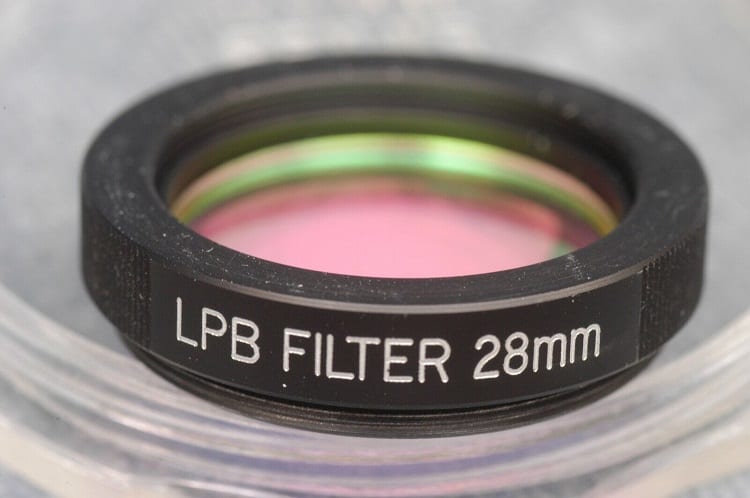
If you want to take photos of the night sky with your camera, you’ll need a light pollution filter for it. But which one is best? Here are some features to look for in a filter.
Double-Sided Threading
The screw-on filters you’ll use on your camera will have threading, but make sure you choose ones that have threading on both sides. This enables you to attach more of the accessories you’ll need during your stargazing session, such as a T-ring so you can attach a camera to your telescope.
Durability
Your light pollution filter should be resistant to water and scratches, especially because you’re going to be using it outside a lot.
Should You Choose A Round Or Rectangular Filter?
There are differences between the two, but whichever one you choose will probably come down to your personal preferences.
- A round light pollution filter is screwed onto the lens of your camera. It needs to be compatible with your camera lens size.
- A rectangular light pollution filter, on the other hand, is more versatile because you can adjust it to fit your camera lens. As a bonus, you can also stack several filters but you’ll need to ensure you have a holder for it because you can’t screw a rectangular light pollution filter onto your camera.
What Are The Best Types Of Light Pollution Filters?

- Basic light pollution filters. These block the wavelengths that are produced by mercury-vapor light as well as other types of common light pollution. They are best for use on telescopes that are up to 114mm diameter, as Tring Astronomy Center reports.
- Astronomik CLS Filters are considered to be general light pollution filters. They can be used on any size of telescope. They also come in a CCD version that has an IR filter, and this is recommended for deep sky photography.
- Baader Moon and SkyGlow filter. This is essentially two filters in one that helps to boost contrast. It’s suitable for reflector telescopes and it reduces skyglow by darkening the region in the image that is affected by light from street lamps. It can also boost details on planets such as Jupiter and Mars.
- O-III filters. These are best for large telescopes with apertures greater than 200mm. Their increased size enables you to spot nebulae in the deep sky much easier.
- Ultra-High Contrast (UHC) filters. These are useful in telescopes with smaller apertures as they transmit more light while reducing light pollution. You’ll be able to see many nebulae with them.
You can find lots of different light pollution filters that have extra features included, such as anti-reflective coatings. Here are four of the best light pollution filters to purchase.

Hoya Starscape Light Pollution Cut Filter
If you’re taking astronomy pictures in a location that has lots of street lights, you might find that your images have a yellow or green hue cast onto them.
This camera filter, which comes in a variety of sizes to accommodate different camera sizes, is a screw-on filter that also enhances contrast while improving your visibility.
Ice LiPo Light Pollution Reduction Filter for Night Sky/Star
This Ice LiPo light pollution filter is useful for preventing skyglow. It absorbs yellow light that gets released from sodium-vapor lamps. It can fit a variety of telescope brands, such as Celestron and Orion, as long as the telescopes have two-inch eyepieces.
It’s got round optical glass that has a double-threaded frame. That means you can stack filters or use caps and hoods with it.
K&F Concept Natural Night Filter Light Pollution Filter
This light pollution filter is resistant to scratches and water, so it’s perfect for taking with you when you go stargazing. It’s a double-threaded filter with a double-sided nano-coating to block orange and yellow wavelengths of light so that they can’t enter the lens.
Do Light Pollution Filters Increase Brightness?
Maybe you’ve heard that using a light pollution filter will increase the brightness of nebulae, but this is a misconception.
They make nebulae dimmer. That might sound like they’ll make the nebulae harder to see, but they actually boost their contrast so that you can see more details in them.
Color Vs. Monochrome Cameras: Which One Is Best?
One of the big questions you’ll have to answer when you want to buy a camera to use for astrophotography is if you’ll use a color or monochrome camera.
While you might think you’d obviously want a color camera when you enhance and edit the photos you’ve taken with them you might find that the camera is making your photos have less quality.
This is why professional astrophotographers create color photos with the use of monochrome cameras and then filter their images.
In addition, monochrome cameras can help you better deal with light pollution issues. These cameras are generally more sensitive than color cameras are so you’ll be able to have a better signal-to-noise ratio. The higher this ratio, the better your image subject will stand out from background noise.
What Light Pollution Filters Won’t Do
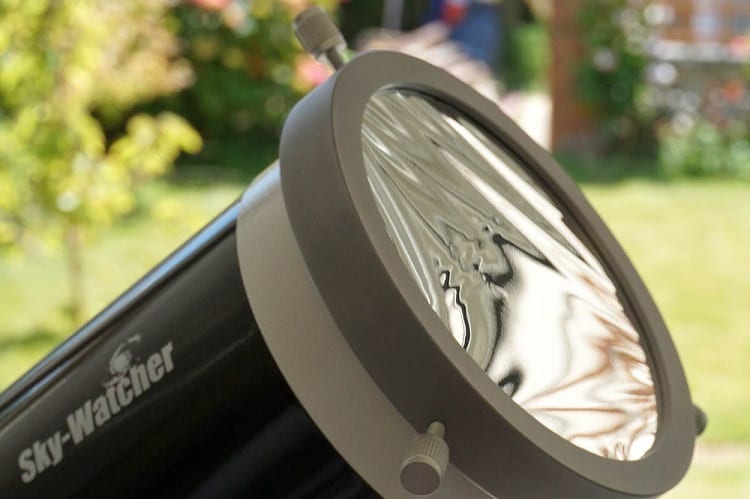
It’s important to realize that you can use light pollution filters to enhance your astronomy images, but they do have some limitations.
- As we’ve seen earlier in this article, there are different sources of light pollution and these all can’t be removed by light pollution filters. As Astronomy reports, these filters can’t reduce the light produced by a vehicle’s headlights or the lights that are directed onto buildings. In addition, the light from incandescent bulbs also can’t be filtered out because of how they emit visible wavelengths. But why, you might be wondering? The reason is because these sources release the light in a continuous spectrum, as Agena Astro Products reports, and they essentially release light at the same discrete wavelengths at which the nebulae release light.
- You can’t use light pollution filters to view the planets and moon, nor can you use them as solar filters.
- When you are capturing nebula that reflect starlight, light pollution filters won’t help to minimize the blue-white reflection that is produced by them.
Despite their limitations, light pollution filters can help you in many ways. They ensure that the light from your celestial subject and its vibrant colors will reach the sensor of your camera so that you don’t have to see the reddish-brown sky.
Related Questions
Where in the world is there the least light pollution?
Countries such as Madagascar, Chad, and the Central African Republic, are the least bothered by light pollution. It’s amazing to think that in these countries you can view the Milky Way because it’s clearly visible.
What’s the difference between a light pollution filter and nebula filter?
Nebula filters transmit sharp colors that are released from the brightest elements of cosmic gas clouds, as Sky and Telescope report. Light pollution filters block color that’s emitted by streetlights and transmitted from celestial objects. Some filters do both tasks.
Conclusion
You don’t have to let light pollution get you down and reduce the quality of your astrophotography. In this article, we’ve looked at light pollution and how it can get in the way of your astrophotography hobby. But you don’t have to let it.
We’ve outlined how you can combat light pollution in your photography, as well as what some of the best filters are to purchase.
For the light pollution, you can’t eliminate when shooting the sky, we’ve also mentioned that there are digital filters to make use of to correct your images and keep them looking as vibrant as possible.

